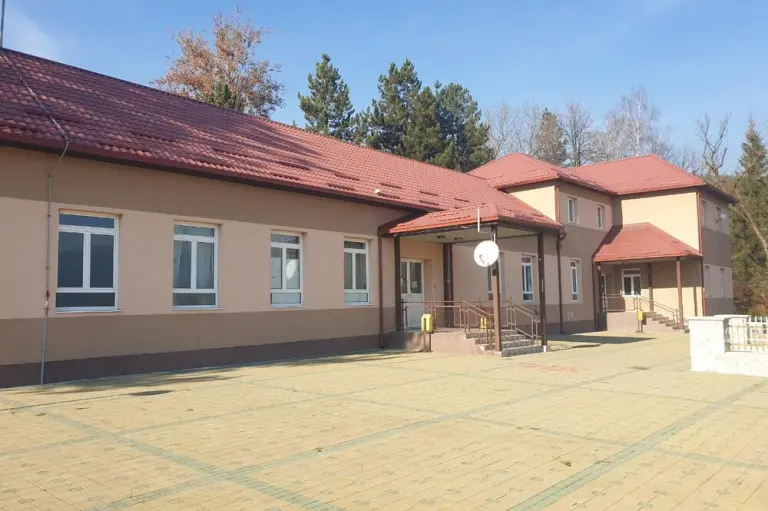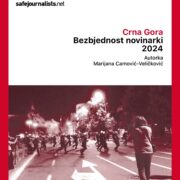
Journalists in Montenegro are aware of the challenges posed by the rapid and simplified ways of gathering information through the internet and social media, and they are interested in further education in the field of media literacy.
This was revealed by a study on the perception and challenges of media literacy among journalists and other media professionals, conducted by the Trade Union of Media of Montenegro (SMCG) as part of the project “Media Literacy for Media Workers.”
The research was conducted from December last year to January this year. The survey was sent to over 300 addresses, and 75 media workers responded.
Research author Dražen Đurašković stated that the majority of respondents, 89%, believe they are well-informed about events in the country, while only 4% had the opposite view.
 He said that 90% of respondents think that the methods of collecting and processing information have changed in the last five years.
He said that 90% of respondents think that the methods of collecting and processing information have changed in the last five years.
Regarding common sources of information, Đurašković noted that other media (competitors), the internet, and social media dominate.
Portals are cited as the most frequent source of information by 41% of respondents, the internet by 45%, television by 9.3%, and printed media are not represented as a dominant source of information,” said Đurašković.
According to him, nearly two-thirds of media employees use social networks as a source of information daily or to a significant extent, 24% use them occasionally, and 10% use them to a small extent.
Đurašković said that respondents most frequently use social networks like Instagram, Facebook, and the X network.
“The main reasons for this are that their sources are on social networks and officials increasingly use social media as a communication channel instead of sending press releases directly to the media,” said Đurašković.
 He added that most respondents are aware of the risks and manipulations that can spread through social networks but also highlight some positive aspects of using them, such as reducing the time needed to publish news.
He added that most respondents are aware of the risks and manipulations that can spread through social networks but also highlight some positive aspects of using them, such as reducing the time needed to publish news.
According to Đurašković, most respondents are familiar with terms like “story,” “reels,” “disinformation,” and “fake news,” but are less familiar with “facetime,” “communication noise,” and “fact-checking.”
When asked if they could explain what media literacy means for media workers, respondents primarily associated it with objectivity, information, critical observation, deconstruction, and contextualization.
Đurašković added that media workers closely associate media literacy with the fight against fake news.
Journalists with up to five years of experience were generally familiar with the term media literacy, while those with 15 or more years of experience considered media literacy a concept inherent in the core of journalism,” said Đurašković.
He stated that 81% of respondents report daily and frequent exposure to disinformation and other negative phenomena of information disorder.
According to Đurašković, journalists see that they are not excluded from all the manipulations that can occur in the digital space and admit they are not equipped with better protection mechanisms.
The majority of respondents also believe that the editorial response to these challenges is extremely weak, citing that the topic is not a focus, they mostly deal with daily issues, and there is no time for additional education. Some also note that the focus on sensationalism in some media is contrary to what media literacy stands for,” said Đurašković.
He added that respondents mentioned personal mechanisms for combating these issues, such as verifying and using only credible sources and critical thinking.
Đurašković said that the research found that almost all respondents, 97%, are interested in training related to media literacy, while 65% acknowledge that their media outlets do not prioritize this topic.
 Those who reported having had some training said it was mostly organized by non-governmental organizations and unions, while work in the newsroom focuses on sharing knowledge among colleagues,” he added.
Those who reported having had some training said it was mostly organized by non-governmental organizations and unions, while work in the newsroom focuses on sharing knowledge among colleagues,” he added.
Đurašković stated that the research results indicate a need for a systematic approach to training journalists and media professionals, with active support from the media themselves.
He said that 24% of respondents had some experience with artificial intelligence (AI) in the process of collecting and processing information, mainly using the ChatGPT program.
He noted a divided opinion among respondents on the impact of AI in journalism.
“Younger respondents mainly cited positive aspects of using AI, such as simplifying certain processes and easier information gathering, while colleagues with more experience had a rather negative attitude towards AI, fearing it could lead to a reduction in the number of media employees,” said Đurašković.
Vice President of SMCG, Marijana Camović Veličković, said that the research results are concerning but not surprising, as the media literacy of media employees should be viewed within the broader context of general working conditions, which are significantly limiting factors when it comes to keeping up with trends in the profession.
She stated that the main challenges identified will be the focus of media literacy guidelines that will follow within the same project and be presented to the public throughout the year.
These and similar activities will contribute to strengthening the position of journalists and other media workers and promoting support within media houses,” added Camović Veličković.
President of SMCG, Radomir Kračković, in a panel dedicated to journalism in the digital media environment, discussed the impact of artificial intelligence on journalism.
 “Artificial intelligence can help perform some automated tasks and process large amounts of information, but no matter how advanced it is, it cannot fulfill the essence of journalism, which is the journalist and their creativity,” said Kračković.
“Artificial intelligence can help perform some automated tasks and process large amounts of information, but no matter how advanced it is, it cannot fulfill the essence of journalism, which is the journalist and their creativity,” said Kračković.
Director of the Media Institute, Olivera Nikolić, said that media literacy is often under the radar of the media and that there is no support for employee education at the editorial level.
When asked if official posts on social media should be news in the media, Nikolić said that social media are certainly a relevant source, but when creating news, it is necessary to put the information in a critical context.
Journalist Andrea Perišić said that young people are aware of the changes in the media market, but they do not receive enough motivation in their workplaces.
The research was conducted as part of the project “Media Literacy of Media Workers,” funded by the U.S. Embassy in Montenegro.
Source: MINA Agency






